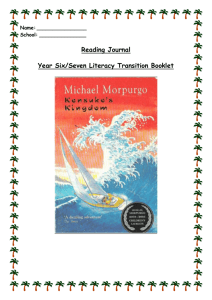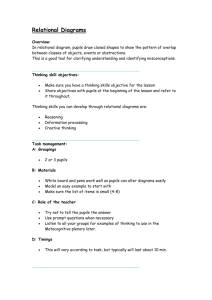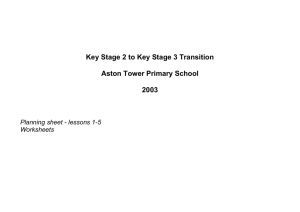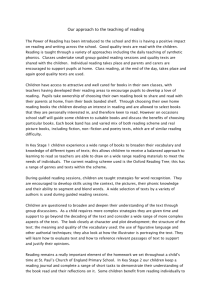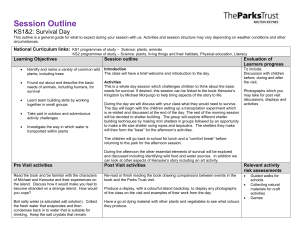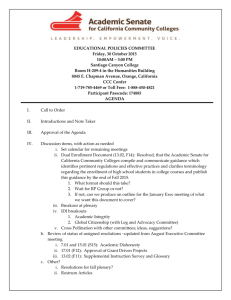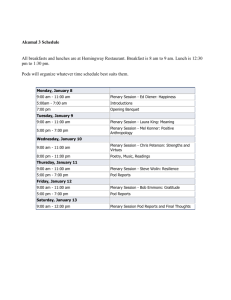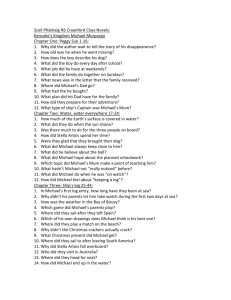Day 3 - Journal Ideas
advertisement
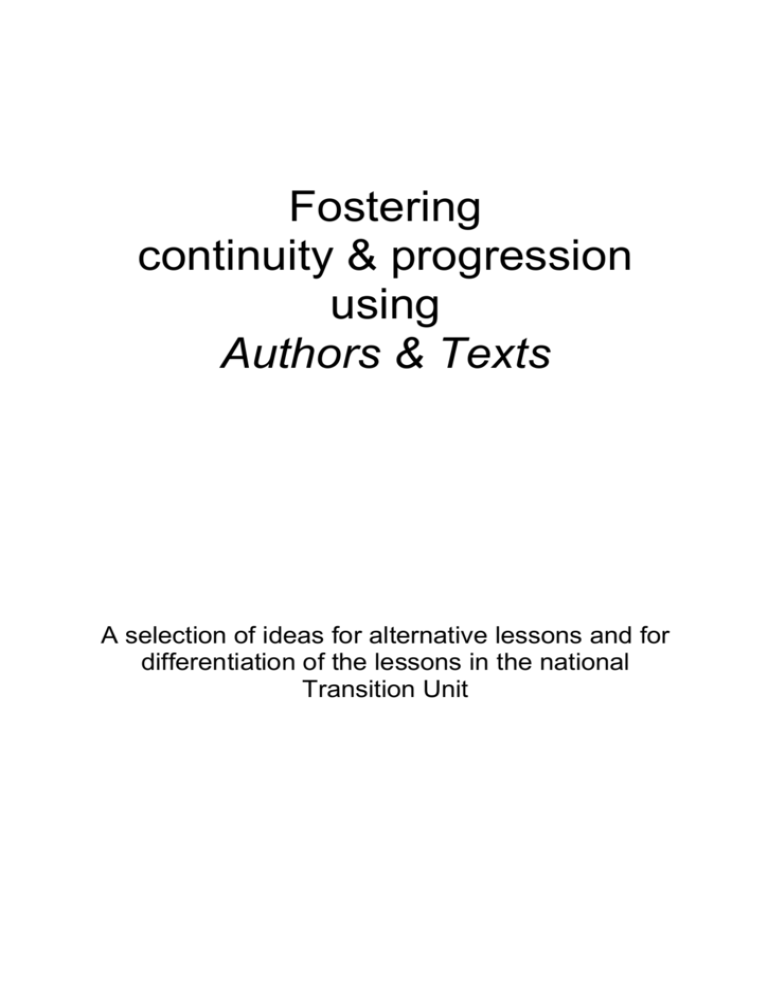
Fostering continuity & progression using Authors & Texts A selection of ideas for alternative lessons and for differentiation of the lessons in the national Transition Unit Y6 Day 3 – Writing a journal entry which compares texts Resource: Sample Text 3 Idea 1 Shared work Lower group Read text to a group of children (auditory learners) – make notes (use OHP) – bring whole class together to compare grid. Middle group Some pupils read texts independently and complete grid (pre –prepared to include some keywords/phrases) independently. Higher group Choose own form of presentation to list differences/similarities. Independent/ guided work Lower group Use a writing frame (differentiated for lower/middle achievers). Middle group Some groups supported by the use of a ‘metalanguage’ wordlist. Higher group Own free writing encourage editing process). Plenary Write examples of viewpoints on board. Other pupils highlight/underline main/subordinate classes in these complex sentences. or Convert a simple sentence/viewpoint into a complex one. Idea 2 Shared work Re-read appropriate extracts. Discuss language used. Demo-draw chart/diagram (dependent on ability of children)’ note key points of similarity and differences. Lower/Middle Description of visual elements moving onto feelings. group Higher group What happened to Kensuke to make him behave in that way? Independent/ / guided work Higher/Middle Use information in chart to write character comparison using group complex sentences. Lower group Plenary Use information from chart to create poster for each character. Label each poster with feelings and words/phrases describing character. Discuss the way in which the posters/grids convey information. Examine similarities and differences in content. Identity situation/purpose where each format would be most appropriate. Idea 3 Shared work Use drama ‘role-on-the-wall’ activity. Pupils use post-it notes to show characteristics of each character. Write external influences on characters around the outline of the character on the board. Pupils need to find evidence from text to support their points/suggestions about characters’ characteristics. Independent/ guided work Draw character from the text on whiteboard (pupil) or provide worksheet’ then use post-its to add information about character (build character profile). Plenary Hot seating activity Or Adjective sort - pupil chooses one from some preprepared adjective cards and places under a character. Idea 4 Shared work Read and discuss both texts. Hot seating/role play/drama. ‘Role-on-the wall’ – character outline on wall fill in with descriptive words/feelings etc. Provide selection of pictures/characters from comics, or photos which might portray the characters. Pupils select most appropriate for each character and justify choice (link to description /action in text). Independent/ guided work Higher/Middle Design a poster (illustrations of characters with descriptions group around them-words taken from the text). Lower group Complete same activity, but teacher acts as scribe. Plenary Show chosen pictures/poster – explain choice. Discuss the differences in the way each character has been created by the writer. Idea 5 Shared work Read text from Kensuke’s Kingdom. Physical description of Kensuke: Highlighting words/phrases which inform reader of the character. Pose question: Which words make him sound threatening? Whole class devise chart focusing on character as first seen/appearance etc. Repeat process with text from ‘The Dancing Bear’. Independent/ guided work Higher group Write comparison of the two characters, bringing out the different techniques the author uses. Middle group Explore relationship between grandfather & Roxanne. Draw heads of 2 characters with thought bubbles. Pupils record the feelings of each character. Lower group As middle – but provide word bank to support writing of thoughts. Plenary Share ideas about the differences in characters. Higher group then explain how the author has created these characters and the different techniques used in each text. Idea 6 Shared work Whole class re-read two extracts. Could use grid in cut and stick making activity or post-it notes on role-on-thewall. Also select quotations to prove the points. Could use group work: 1- on Kensuke; 2- on Roxanne; 3- finding quotes about Kensuke; 4- finding quotes about Roxanne. Independent/ guided work Some, given connectives, would be able to write prose. Probably need to model this first, highlighting use of the connectives. Lower group Have statements on card and connectives for them to put together to form sentences. Plenary Checklist – what have you noticed about the character? Confirm understanding of character traits, description etc. Discuss how one describes a character. Idea 7 Shared work Re-read extracts. Differentiated tasks: - Statement banks to involve children choosing appropriate descriptions of each character; - highlighters used on extracts to identify characteristics; - make notes about each character (using spiral bound ‘journalist notepads’ ) Conclude shared session with characteristics brainstorm and colour code this.. Independent/ guided work Lower ability Working with an SLA. Build up sentence to describe Roxanne and Kensuke. On A3 draw characters and label. Middle ability Sentence strips to describe characters – stick onto a divided chart or use ICT. Higher ability Use description as a basis to write prose comparison. Plenary Use of drama activity e.g. still image / thought tracking to present the character from a ‘moment in the story’.
